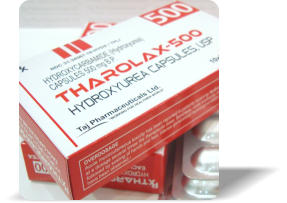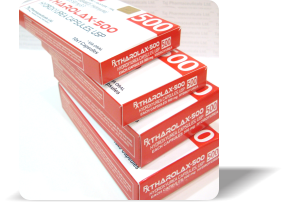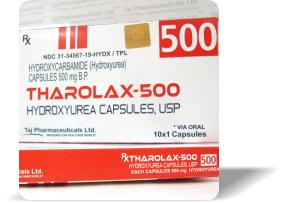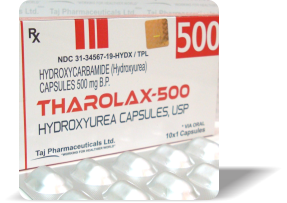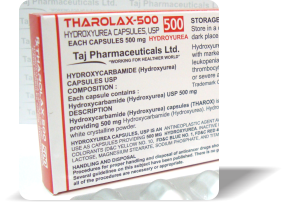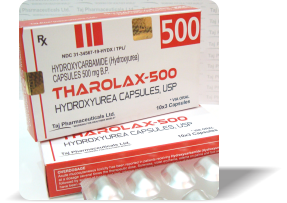Please read this leaflet carefully and keep it in a safe place so you may refer to it later.
Tharolax (Hydroxyurea) 500mg Capsule
THAROLAX (hydroxyurea capsules, USP) is a prescription medicine that is used to reduce the frequency of painful crises and reduce the need for blood transfusions in adults with sickle cell anemia. How THAROLAX works is not certain but it may work by reducing the number of white blood cells and/or increasing red blood cells that carry fetal hemoglobin (HbF). Fetal hemoglobin may prevent sickling.
Tharolax (Hydroxyurea) is used to treat various types of cancers such as melanoma, leukemia and cancer of the ovary. Tharolax(Hydroxyurea) contains hydroxyurea, an anti-cancer medicine. It interferes with the replication of cells and causes cell death, particularly in cancer cells.
Ingredients
Active:
The active ingredient in Tharolax capsules is hydroxyurea.
Each capsule contains 500mg of hydroxyurea.
Inactive:
Each capsule also contains citric acid, lactose, magnesium stearate, sodium phosphate & capsule colourants.
Storage
Tharolax(Hydroxyurea) capsules should be stored below 30°C in a cool dry place. The container must be tightly closed.
Do not store Tharolax(Hydroxyurea) or any other medicine in the bathroom or near a sink.
Do not leave it in the car on hot days. Heat and dampness can destroy some medicines.
Keep it where children cannot reach it.
A locked cupboard at least one-anda- half metres above the ground is a good place to store medicines. Pay particular attention to this when you are opening the capsules to dissolve the contents in water.
Disposal
If your doctor tells you to stop taking Tharolax(Hydroxyurea), return any that you have not taken to your treating clinic/ hospital, doctor or pharmacist, so they can be disposed of safely.
Important Safety Information
Treatment of patients with THAROLAX may be complicated by severe, sometimes lifethreatening, adverse effects. THAROLAX should be administered under the supervision of a physician experienced in the use of this medication for the treatment of sickle cell anemia.
Hydroxyurea is mutagenic and clastogenic, and causes cellular transformation to a tumorigenic phenotype. Hydroxyurea is thus unequivocally genotoxic and a presumed transspecies carcinogen which implies a carcinogenic risk to humans. In patients receiving long-term hydroxyurea for myeloproliferative disorders, such as polycythemia vera and thrombocythemia, secondary leukaemia’s have been reported. It is unknown whether this leukemogenic effect is secondary to hydroxyurea or is associated with the patient's underlying disease. The physician and patient must very carefully consider the potential benefits of THAROLAX relative to the undefined risk of developing secondary malignancies. Tharolax is used to treat chronic myeloid leukaemia or cervical cancer.
Your medical team will discuss with you the options for treating your cancer. They will take into account factors such as the type of cancer, where it is, which stage it is at and whether you have had treatment before. The results of blood tests and other investigations will also be considered. How well you feel and how you are likely to cope with treatment is also important.
Your cancer treatment will usually consist of a treatment session with Tharolax followed by a break of a number of days before the next treatment session with Tharolax. This cycle may be repeated many times as part of your cancer treatment. Tharolax works by damaging cancer cells in the body. Tharolax also affects healthy cells and treatment with Tharolax may damage your immune system. Your medical team may arrange for you to have some blood tests to check how well your immune system is working.
Do not share your medicine with other people. It may not be suitable for them and may harm them.
The pharmacy label on your medicine tells you how much medicine you should take. It also tells you how often you should take your medicine. This is the dose that you and your prescriber have agreed you should take. You should not change the dose of your medicine unless you are told to do so by your prescriber. If you feel that the medicine is making you unwell or you do not think it is working, then talk to your prescriber.
Patient Information 
Full Prescribing Information 
.png)




